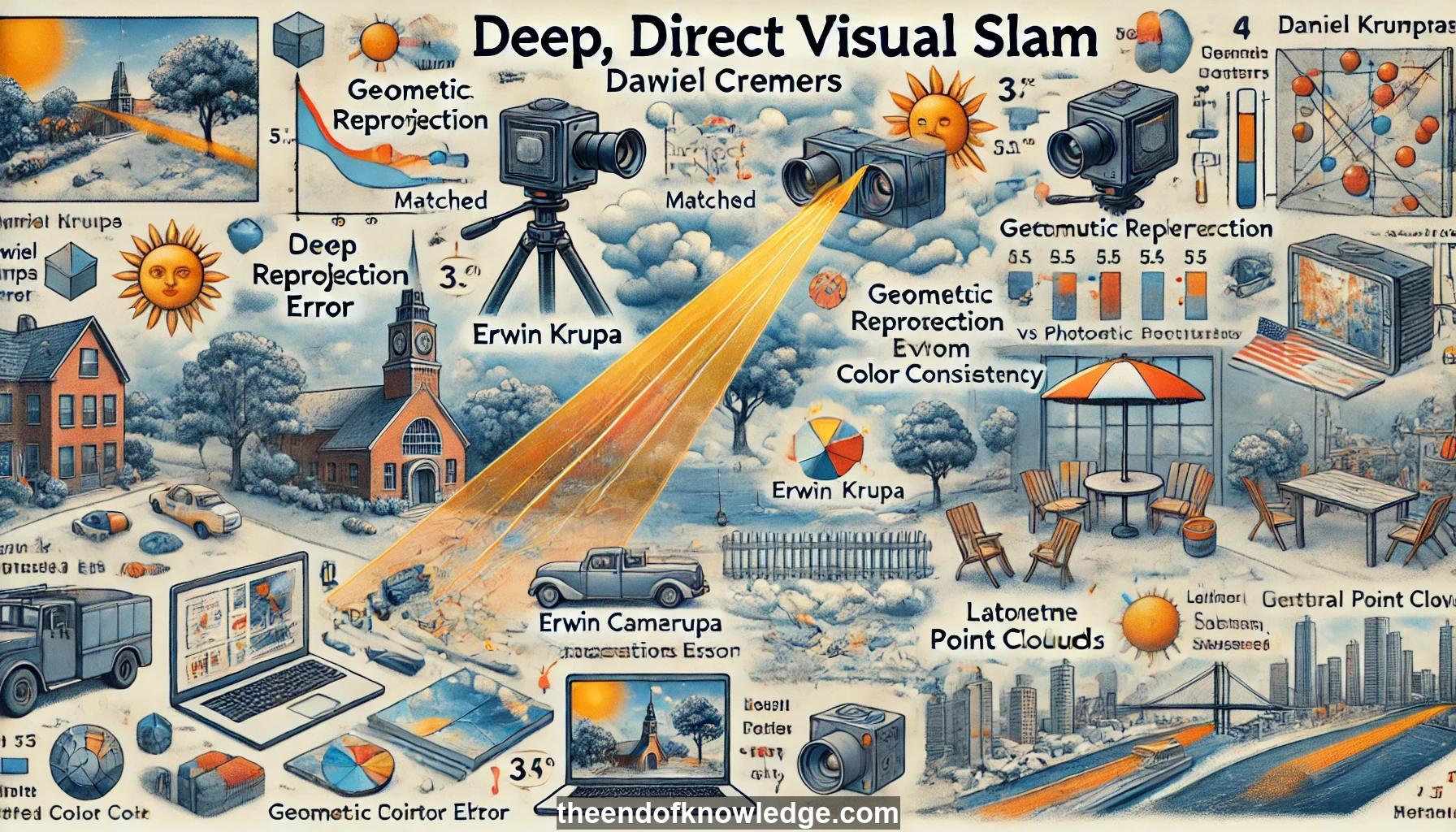 >
>
Concept Graph & Resume using Claude 3.5 Sonnet | Chat GPT4o | Llama 3:
Resume:
1.- Direct visual SLAM: Uses raw image intensities to reconstruct 3D structure and camera motion, avoiding intermediate point extraction and matching steps.
2.- Classical vs. direct methods: Classical methods use geometric reprojection error, while direct methods minimize photometric color consistency error.
3.- LSD SLAM: Large-scale direct SLAM method that alternates between camera tracking and depth map estimation for keyframes.
4.- Brightness consistency: Direct methods optimize camera motion by minimizing differences in pixel intensities between aligned images.
5.- Real-time performance: LSD SLAM runs on a single CPU core, allowing other cores for depth estimation and optimization.
6.- Large-scale reconstruction: The method can reconstruct large outdoor environments with relatively low drift.
7.- Drift quantification: Sequences looping back to start point allow measurement of total drift in translation, rotation, and scale.
8.- Deep learning integration: Neural networks can enhance direct SLAM methods by predicting depth, pose, and uncertainty.
9.- Semantic mapping: Deep networks can label 3D reconstructions with semantic information like drivable areas, cars, and pedestrians.
10.- Single-image depth prediction: Neural networks can estimate depth from a single image, improving initialization in SLAM.
11.- Scale estimation: Deep learning allows monocular systems to recover absolute scale, previously impossible with single cameras.
12.- Deep Virtual Stereo Odometry: Integrates deep learning depth and pose predictions into classical SLAM pipeline.
13.- Pose prediction: Neural networks can estimate relative pose between consecutive frames, aiding in tracking.
14.- Brightness correction: Networks can predict affine transformations to correct for brightness changes between frames.
15.- Aleatoric uncertainty: Networks can estimate uncertainty in predictions, allowing down-weighting of unreliable areas.
16.- Non-linear factor graph: Integrates deep learning predictions into front-end tracking and back-end optimization of SLAM.
17.- Generalization: Trained networks can generalize to new environments and datasets not seen during training.
18.- Monocular vs. stereo performance: Deep learning-enhanced monocular methods can outperform classical stereo methods.
19.- Relocalization challenge: Recognizing the same location under different weather and lighting conditions is difficult.
20.- Feature space transformation: Networks can transform images into consistent feature spaces robust to appearance changes.
21.- Gauss-Newton Net: Designed to produce features optimally suited for subsequent optimization in Gauss-Newton SLAM algorithms.
22.- Multi-weather localization: Ability to localize in previously mapped environments despite significant changes in lighting and weather.
23.- Benchmark datasets: Created multi-weather localization benchmarks using simulator and real-world data for evaluation.
24.- Generalization to unseen conditions: Methods trained on certain weather conditions can generalize to unseen weather types.
25.- High-precision localization: Achieved unprecedented precision in localizing autonomous systems or cars in various conditions.
26.- Real-time 3D mapping: Enables creation of large-scale, high-resolution 3D maps in real-time for autonomous systems.
27.- Simulated vs. real data: Performance on simulated environments can transfer well to real-world scenarios.
28.- Anisotropic uncertainty: Gauss-Newton loss allows for direction-dependent uncertainties in feature matching.
29.- Basin of attraction: Design of loss functions to ensure convergence even with poor initialization.
30.- Robustness to occlusions: Methods can handle temporary occlusions and changes in the environment between mapping and localization.
Knowledge Vault built byDavid Vivancos 2024